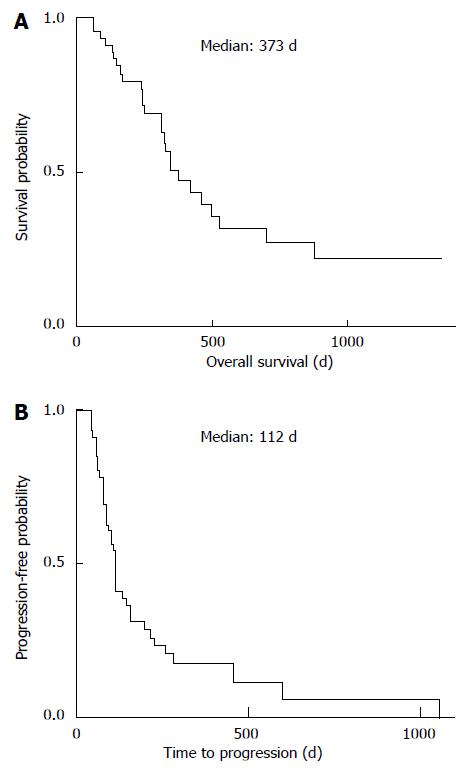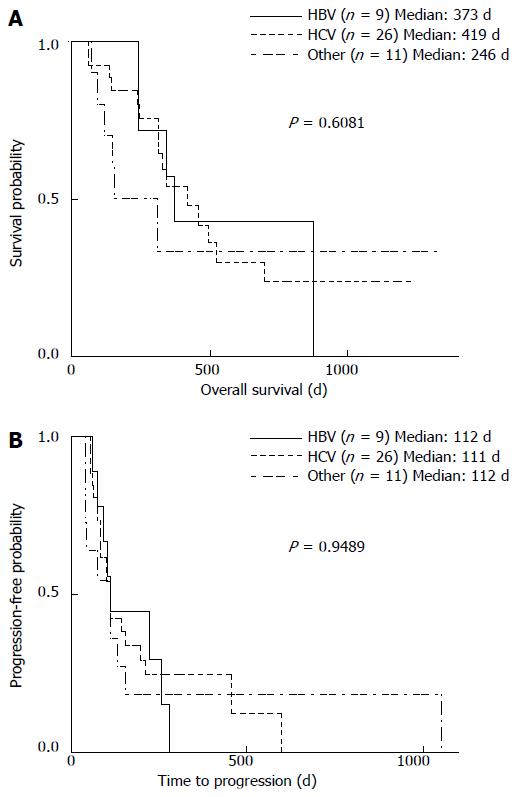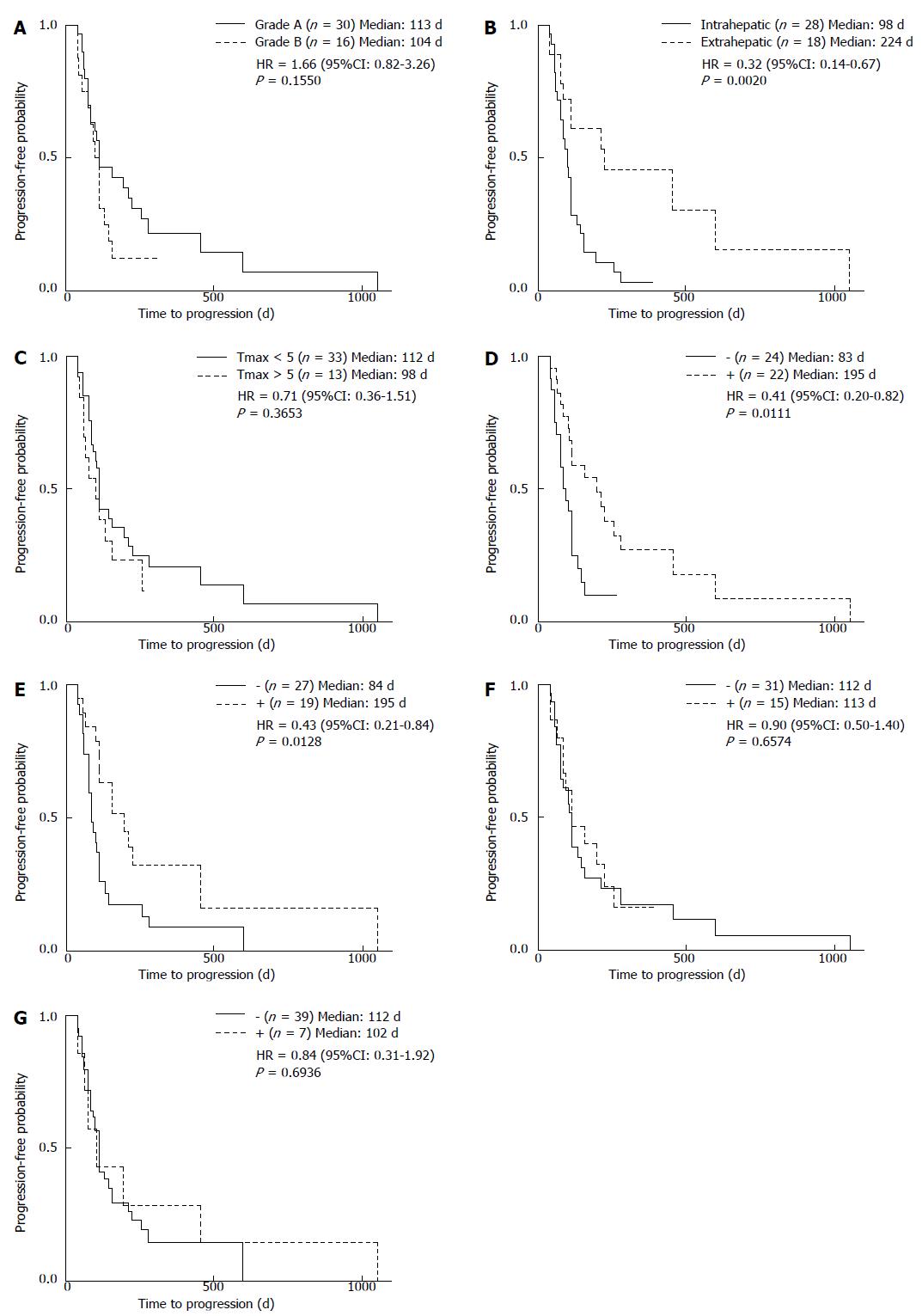Copyright
©2014 Baishideng Publishing Group Inc.
World J Gastroenterol. Sep 21, 2014; 20(35): 12581-12587
Published online Sep 21, 2014. doi: 10.3748/wjg.v20.i35.12581
Published online Sep 21, 2014. doi: 10.3748/wjg.v20.i35.12581
Figure 1 Overall survival and time to progression.
A: Overall survival; B: Time to progression of all patients enrolled in this study was estimated using Kaplan-Meier analysis.
Figure 2 Hepatocellular carcinoma etiology in relation to overall survival and time to progression.
A: Overall survival (OS); B: Time to progression (TTP) were analyzed according to the etiology of hepatocellular carcinoma (HCC). HBV: Hepatitis B virus; HCV: Hepatitis C virus.
Figure 3 Relationship of clinical factors with time to progression.
Time to progression (TTP) was analyzed according to A: Child-Pugh grade; B: Location of largest hepatocellular carcinoma; C: Size of the largest tumor, and the occurrence of D: Hand-foot syndrome; E: Hypertension; F: Diarrhea; G: Alopecia.
Figure 4 Relationship of starting sorafenib dose with time to progression.
Time to progression (TTP) was analyzed according to sorafenib dose at the beginning of the treatment.
- Citation: Yada M, Masumoto A, Motomura K, Tajiri H, Morita Y, Suzuki H, Senju T, Koyanagi T. Indicators of sorafenib efficacy in patients with advanced hepatocellular carcinoma. World J Gastroenterol 2014; 20(35): 12581-12587
- URL: https://www.wjgnet.com/1007-9327/full/v20/i35/12581.htm
- DOI: https://dx.doi.org/10.3748/wjg.v20.i35.12581












